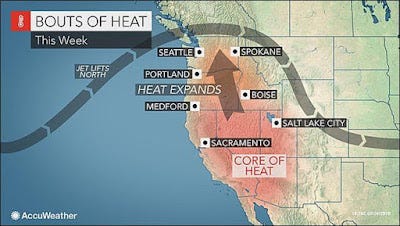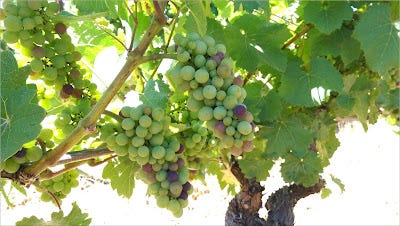Amalie Robert Estate Vintage Update: 2016 Pinot Noir In Flagrante!
Hello and Welcome,

If farm equipment could talk:
“Torque my lugs, change my oil, lube my chain, grease my zerk!” or “Hey, does the lack of air pressure make my tire look fat?” or “You know, that little red light on the fuel gauge means time for more diesel and can save you from a very long walk.” or “It’s just a dipstick, nothing to be afraid of” and “Winegrower? Oh really…”
But it can’t. What it can do is stop working. And that is a language that everyone understands. As in “No coffee, no workee!”
This is why Ernie takes advantage of the small breaks in the farming schedule to perform maintenance. And for the “non-farmers” reading this we would like to point out the two types of farm maintenance. Regularly scheduled maintenance is usually based on hours driven for tractors (think miles for cars and trucks) or a specific period of time such as annually.
Percussive maintenance is just what you think it is and can be performed at any point in the farming cycle. It is usually performed as a response to operating a piece of equipment outside of its designed operating parameters. Or it could be the case that the last regularly scheduled maintenance was performed…never. The result however, is always quite binary:
1) The act of repeatedly applying force (and or heat) over a brief (or extended) period of time has enabled the equipment (or implement) to function, in at least some capacity for a limited amount of time such that farming operations may resume. Pain relievers (and perhaps an ARB) are in your immediate future. OR
0) It has become painfully obvious that the equipment (or implement) has (possibly prematurely) reached the end of its useful life and no amount of percussive maintenance is going to change that sad (and about to get expensive) fact. Fully depreciated, if you will, or just plain old worn out, the only thing you have going for you now is trade in value. In retrospect, you could have done without that bigger hammer. Time to go shopping for farm equipment…
But not today! Today we see another blazing indicator that harvest is on its way. Those little pink wine berries are telling us that it is time to get the harvest equipment “properly” maintained, or replaced, as the case may be.

In your mind’s eye, just imagine how the likes of Dick Erath or David Lett or Dick and Nancy Ponzi or Bruce Weber felt when they saw the very first pink wine berry on their very own vines representing their very first harvest. And you know, it wasn’t all that long ago. We take it for granted now in the Willamette Valley, but it wasn’t always so.

The other thing that we are paying attention to at Amalie Robert Estate is the trending manifestation of this event year over year. This year, we saw the very first wine berries blaze on July 22nd (but it is a leap year.) The 2015 growing season showed its colors on July 23rd. The historical average vacillates around August 15th. Also of note is the comparative degree days from April though June: 2016 has logged 805.1 degree days and 2015 had logged 799.1 degree days.
Pardon us while we bring the elephant into the room. We see the same summer weather pattern that we have seen since 2012. We thought 2012 was a hot year until we farmed each successive vintage afterwards. The humans will most likely notice the high temperatures and marvel at the number of days above 90 degrees. Meh…

The vines will take all of that heat and sun exposure and turn it into energy to ripen their seeds, allowing them to reproduce and then nod off for a 6 month nap. And they will be doing it all night long.
That is the farming difference we see from the most recent vintages compared to say 2007, 2010 and 2011. The cooler vintages are “more cool” because the nighttime temperatures keep the vines’ ripening curve in check. All of that photosynthesis does no good to the vine until it translocates the energy from the leaf. And that translocation slows down significantly when the temperature drops below 50 degrees.
So, the nighttime temperatures are once again telling the story of the vintage. Cool nights mean slower sugar accumulation and more time on the vine to develop aroma and flavor. Warm temperatures speed things along until we find widespread premature fermentation due to harvest decisions being based on sugars to keep the alcohols below 15%. Yeast die at 15.6% alcohol and will leave you with sweet wine – Good to know.
And the most fascinating thing to consider is why does a corkscrew, when inserted properly into a cork, turn in a clockwise manner. From a physics point of view, it could have been made to work just the opposite. Lefty Loosy, Righty Tighty.

And if that cork just won’t give it up, Port Tongs could be in your “percussive maintenance” future. Add fire, and you are going old school now. Note: gloves will be a useful thing to have at the beginningof this process. Welcome to our world.
Blaze on you crazy wine berry.
Kindest Regards,
Dena & Ernie



